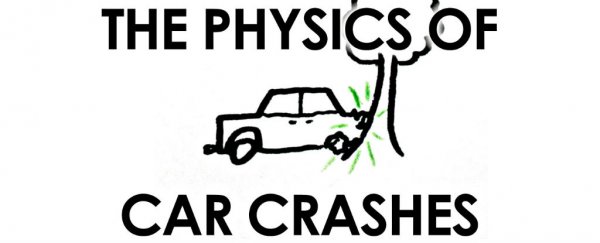There's a reason gasoline has become so ubiquitous in our global economy - just 1 litre contains 56 megajoules (1 MJ equals 1 million joules) of energy, which is more energy than you'd get if you exploded the same amount of TNT. So what happens when our cars convert all that highly efficient chemical energy into kinetic energy and then ram into each other or similarly hard objects? The latest episode of MinutePhysics does the maths, and as usual, it's fascinating.
While 80 percent of all that kinetic energy from fuel is lost as heat when we're driving, the other 20 percent is more than enough to power our journeys. As Henry Reich points out in the video above, 20 percent of 56 million joules - 11 million joules - is still a lot of energy. To put this in perspective, it takes about 5 teaspoons of gas to accelerate a 2-tonne car to 60 km/h, and then you'll need about 1/3 cup more gas for every subsequent minute of driving.
And while driving at 60 km/h maybe doesn't seem all that exciting, Henry's calculated the energy expenditure of accelerating a car to that speed and it's equivalent to dropping a Stegosaurus off the top of a three-storey building.
But what happens when you want to stop the car? All that energy has to go somewhere, and where it goes depends on how you stop. When you use the brakes like normal, the energy is dissipated by the brakes heating up. When you crash into a tree, the energy is dissipated by the bending and crumpling of metal.
"Most cars only have around 50 cm of crushable space in which to dissipate the energy equivalent of our falling Stegosaur," says Henry. "That means that while crumpling, you need to maintain a resistive force of around a quarter of the thrust of the space shuttle's main engine."
You can thank the amazing engineers that designed your car for that one - they've figured out how to arrange various shapes and sizes of structural metal to the nose of your car to keep the impact short enough to put you at the least amount of risk as possible, given the circumstances.
Watch the episode of MinutePhysics above to find out why the "crunchy crumple cell" of your car (that's the technical term) could one day save your life, thanks to physics.
